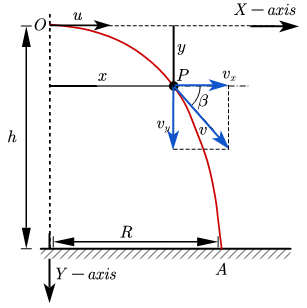
In order to make your shots repeatable, you need to pull back the resistance band by the same amount each time. Making repeatable shots can be challenging because of Hooke's Law the farther you pull back the resistance band, the faster and farther it will shoot because you are storing more potential energy in the band.

Make sure the ball doesn't hit any walls – you need the ball to hit the ground uninterrupted after it flies so you can measure the projectile range correctly.Īll good experiments are repeatable. Start off pulling back very lightly and gradually increase the power until you have a good trajectory. Pull back gently on a downward angle, about 45 degrees. Bring your arm behind the launcher and pinch the top and bottom of the bouncy ball, making sure the opening in the resistance band faces forward. Do not put your face directly behind or in front of the line-of-sight to avoid accidentally getting hit in the face. Stand next to the chair and do not set up the shot if anyone is in front of the chair. Spread the resistance band open and place the bouncy ball right in the middle. Never shoot at another person or animal intentionally, and do everything possible to ensure the area is clear. But first, a word on safety: a bouncy ball at high speeds could cause injury, especially damage to the eyes. It's time to refine your launch technique. The launcher should be consistent (it should shoot with the same power with every shot).However, objects that are too dense and hard can also be a safety hazard and For example, if you use a ping pong ball then you probably won't succeed, as its trajectory is greatly affected by air resistance. Projectiles with higher density will produce more accurate results.Do not use a launcher that endangers others or would cause damage to your home or classroom.If you're feeling adventurous, you may replace our launcher with any launcher of your choice. A stopwatch or a smartphone that can take videos and.To measure the trajectory, you will need: Magazine holder or other reference object (optional).A flat exercise band (light resistance is best), such as TheraBand.To make the launcher we recommend, you will need: For the experiment, you will enter the time of flight, distance, and initial height and the calculator will help you find the launch angle and initial velocity. The neat thing about the projectile motion calculator is that it also works 'in reverse'. If you drew a free-body diagram of such an object, you would only have to draw one downward vector and denote it as “gravity.”ĭepending on your learning objectives, you can either use the calculator alone or use the equations to try to work out the answers independently. In this experiment, we will only consider the one major force acting on a projectile – the force of gravity.

If you'd like to learn more about it and the governing equations, the trajectory calculator is a way to go.

Any object moving in such a way is in projectile motion. If you could trace its path, it would be a curve called a trajectory in the shape of a parabola (ignoring air resistance). The further it flies, the slower its ascent is – until it finally starts descending, moving now downwards and forwards and finally hitting the ground again. It starts moving up and forward, at some inclination from the ground. Imagine an archer sending an arrow into the air.


 0 kommentar(er)
0 kommentar(er)
